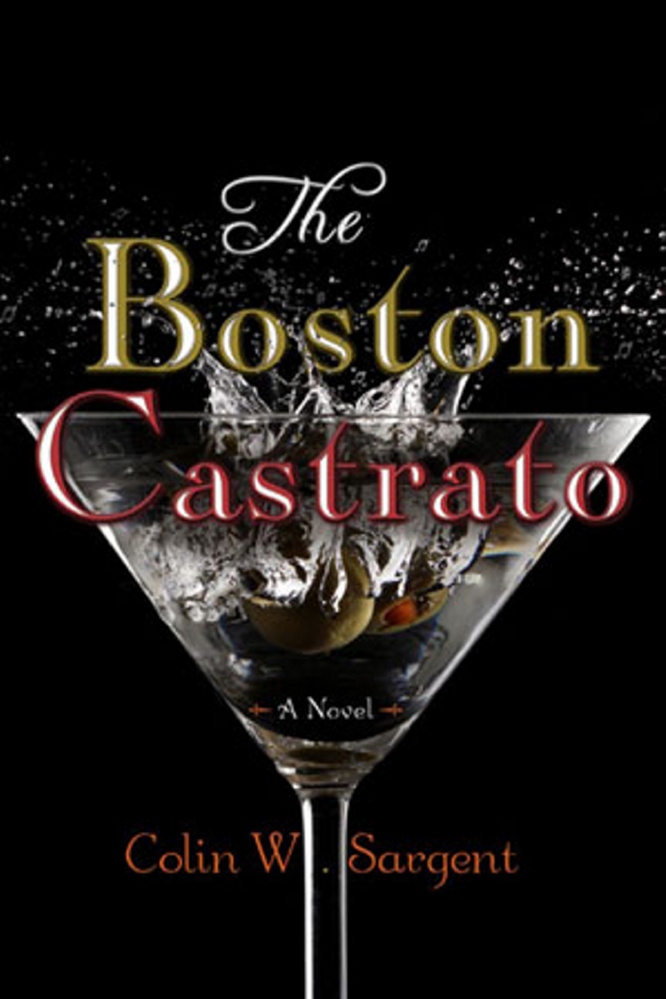What a dream! What a song! Portland author Colin W. Sargent’s second novel, “The Boston Castrato,” is a whirlwind tale, abounding in fully realized historical and imagined characters, with convincing yet phantasmagoric settings that suggest a mild hallucinogen. Storylines appear to veer in all directions, but never fear, there is a core trajectory.
Shot through with wordplay that a few readers might term cruel and unusual punishment, the book is a nonstop delight to read. In spite of what the title might seem to suggest, it proves a love story.
This is the epic story of one Raffi Pesca, a Naples street urchin taken in by a creepy but earnest talent scout of a priest in 1906. The price of this ecclesiastical largesse is Raffi’s manhood. The reward: some gold coins and the gift of an extraordinary singing voice. However, high church officials, in a fit of early-20th century political correctness, defrock the priest, close his operation down and inform him that the “church is no longer in the monster business.” As with so many situations Raffi will soon encounter, this is the twilight of a tradition.
Not knowing quite what to do with the maimed child, church fathers rename him Rafaele Peach, give him a ticket to America, a start in the new world in a Bronx orphanage smack in the shadow of a neon sign for Underwood deviled ham. That sign, ubiquitous in the Northeast, will play a role over time and place, as both symbol and physical prop.
Adventures move our hero to Boston, Italy and back to the Yankee hub of the universe in the early 1920s, where a bewildering series of events ensnares and informs the now half-worldly, half-naïve but ever-ripening Peach.
At its widest scope, “The Boston Castrato,” is a first-rate picaresque, which should be read for the pure pleasure of the story, characters and ambiance. There are more circles than “The Divine Comedy,” as Sargent weaves together an investigation of the sterilization and sealing of “bad clams,” the unfolding of the Sacco and Vanzetti trial and Ezra Pound’s savaging of poet Amy Lowell’s imagism as “amygism.”
Truly, though, it is Sargent’s impressive knowledge of place, time, people and spirit that sets the novel spinning on its own internal axis. Indeed, the author states that his insight into Naples was largely gained during his hitch in the Navy as a helicopter pilot and, though the story only resides there briefly, it is most convincing. The reader is bound to ask where Sargent gained such a wondrous, convincing understanding of the Boston literary, cultural and criminal life in the 1920s.
As a great fan of that time and place, then in its gaudy twilight, this reviewer stands in awe of the historical assuredness of place and character-driven pace. Much of the action surges in and around the grand Parker House, a surviving icon.
As the blare of the 1913 Armory Show and Jazz Age swamp the bohemian Brahmins and their minions, and as gifted amateurs are overtaken by professionals, one enters a fantastic world not available in a Frommer’s Guide list of worthies, available nowhere else that I am aware of, at least not in such honesty and resplendence. The characters may all wear masks, but in the end they reveal parts of themselves in sober honesty.
In the end too, Boston Brahmin poet Amy Lowell and her presumed literary executioner both lie entombed in the same academic encyclopedias, each given their own devil’s due. As for Mr. Peach, he takes his place among literature’s delightful and original characters.
William David Barry is a local historian who has authored/co-authored seven books, including “Maine: The Wilder Side of New England” and “Deering: A Social and Architectural History.” He lives in Portland with his wife, Debra, and their cat, Nadine.
Send questions/comments to the editors.



Success. Please wait for the page to reload. If the page does not reload within 5 seconds, please refresh the page.
Enter your email and password to access comments.
Hi, to comment on stories you must . This profile is in addition to your subscription and website login.
Already have a commenting profile? .
Invalid username/password.
Please check your email to confirm and complete your registration.
Only subscribers are eligible to post comments. Please subscribe or login first for digital access. Here’s why.
Use the form below to reset your password. When you've submitted your account email, we will send an email with a reset code.